Realistic Caterpillar Fly
Our Realistic Caterpillar Fly is a great imitation of a real caterpillar. It has the authentic look, the long, segmented body, a row of flexible legs on each side, distinctive head and life-like colors and markings. The body is made out of foam-like material, it is lightweight and has great buoyancy, it will float very nicely. The 5 pairs of legs on this fly act like a trigger. The best is to cast this fly close to the bank, optimally under the branches. Can be fished using dead drift technique with a bit of a twitch, as twitching it gives an impression of caterpillar struggling on the surface and can induce some explosive strikes. Proven effective many times over during summer and early fall months, especially under the overgrown banks. The material is very durable and will withstand many takes. Great pattern to mimic the real caterpillar, but also very effective in imitating sawfly larvas, inchworms, wood wasp larva and other similar looking fly patterns.
Realistic Caterpillar Fly pattern comes in a hook size #6 (approx. length of fly 3 cm / 1.2 inches) and in Green, Brown and Orange.
Caterpillar
Caterpillars are the larval stage of butterflies and moths, insects of order Lepidoptera. They are mostly herbivorous and are known as voracious feeders, earning them a name eating machines. Due to this they are very often considered serious agricultural pests. They have long, soft bodies with a small head in a hardened capsule. They range in size depending on the species and can be long anywhere from 1 mm to a gigantic 14-15 cm. Very often they are mixed up with sawfly larva, but can be differentiated from sawflies by the number of legs: caterpillars have a maximum of 5 pairs of legs, while a sawfly has 6 or more pairs. Caterpillars grow very fast and usually don’t stay too long in this stage. As they are full of protein, they represent a great food choice, and have developed various means to defend themselves from predators. Most developed camouflaging colors as protection, and some are even poisonous. Many species resemble the plants on which they feed – their color is determined by the food they eat and the content of tannin in it. For the ones that hatch in the spring, their color is usually brighter green, for the summer hatching ones they feature darker green or brownish colors.
Fishing Caterpillar Flies
Caterpillars reside in foliage, feeding. When wind blows they often fall into the stream beneath it. As they fall, the trout is drawn to them and would even swim long stretches across the stream just to grab one of these juicy, protein-rich meals. The best is to cast this fly close to the overgrown banks. Can be fished using dead drift technique with a bit of a twitch, as twitching a fly gives an impression of caterpillar struggling on the surface and can induce some explosive strikes.
Fly Fishing Terrestrial Flies
Terrestrial insects are land-bred. Some of the species of terrestrials include: hoppers (grasshoppers), ants, beetles, bees, crickets, etc.
Terrestrials are one of the essential food sources for trout and other game fish during summer months. Hot summer months are when the aquatic insects become sparse, the trout is the most active and grows the fastest. This is when terrestrials become their most important food source as a rich source of protein. A terrestrial falling into the water is a great and nutritious meal for fish as these insects are usually bulkier and heavier than aquatic insects and they provide a large calorie intake when the trout need it most.
Terrestrial fly patterns are effective from May till October, and sometimes even into the November.
As terrestrials are most active and most likely to fall in the river during the day, the best time to fish these fly patterns is anytime from late morning all the way through the evening. Windy days are best as the wind ‘pushes’ them to the water. Optimal locations to present terrestrial patterns is along cut banks, grassy shorelines or under big trees – places where fish wait for them – easy meals just dropping in. As these insects will eventually be pulled further into the river – midstream can also be a good place to present your fly.
On smaller streams fish are depending mostly on terrestrials as their food source. Small waters don’t have the high-energy riffles where the aquatic insects spend much of their lifecycles. For fishing small streams – terrestrials are a must.
Being it mid-summer, early fall, or the midst of spring – fishing terrestrial fly patterns can provide top dry-fly action!

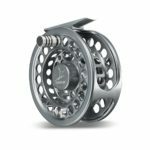
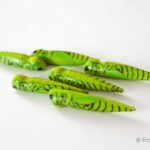
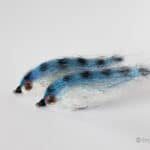


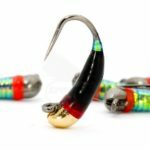
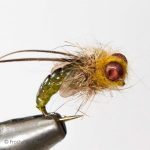
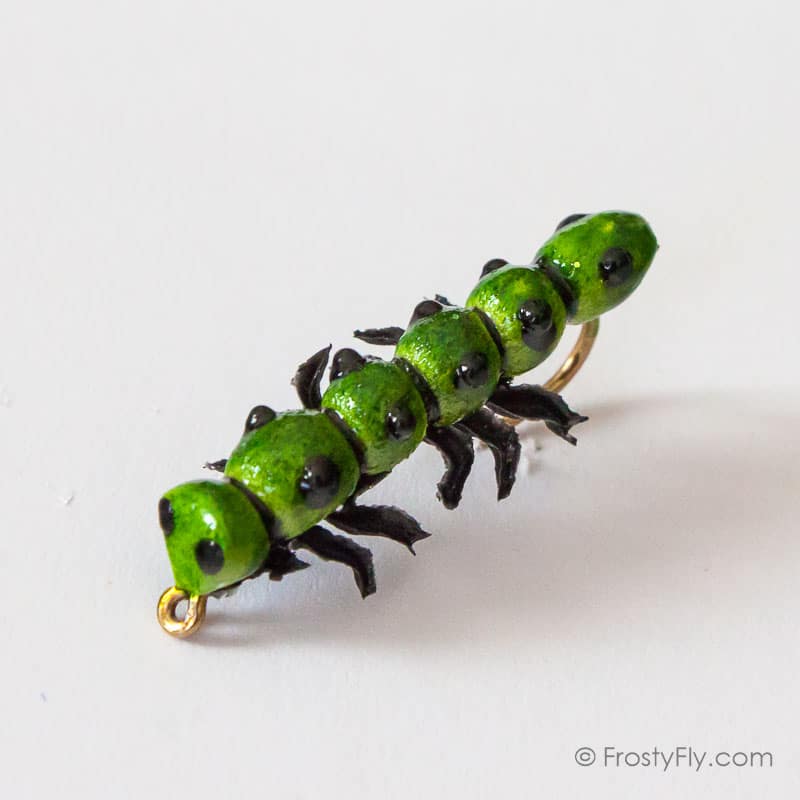
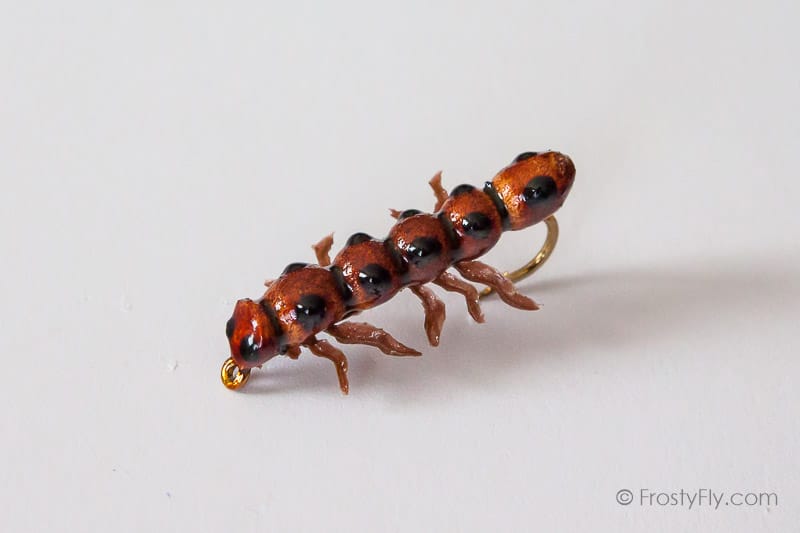
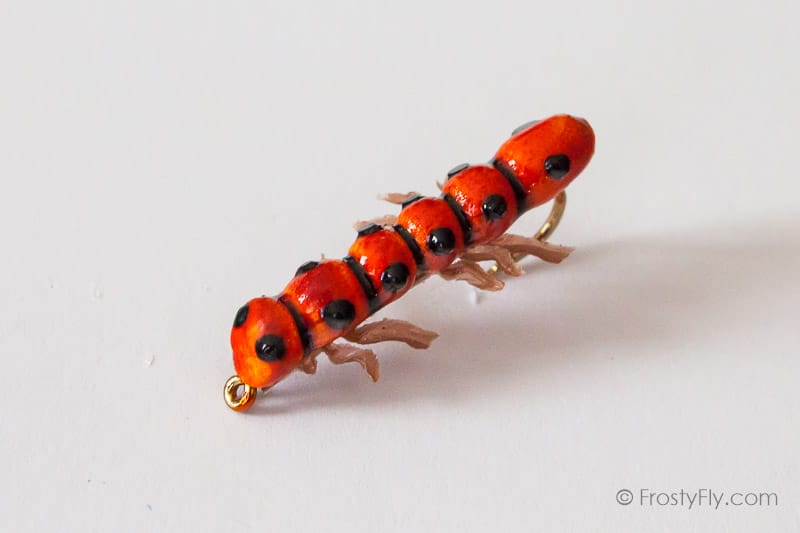
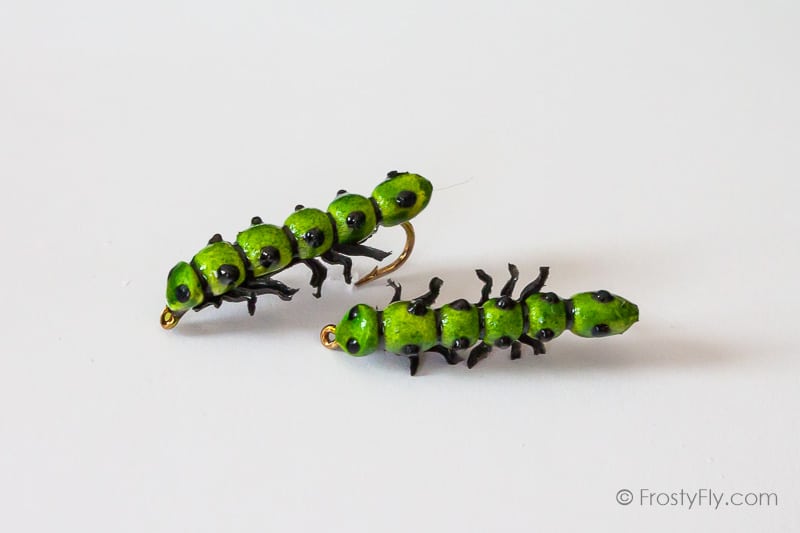
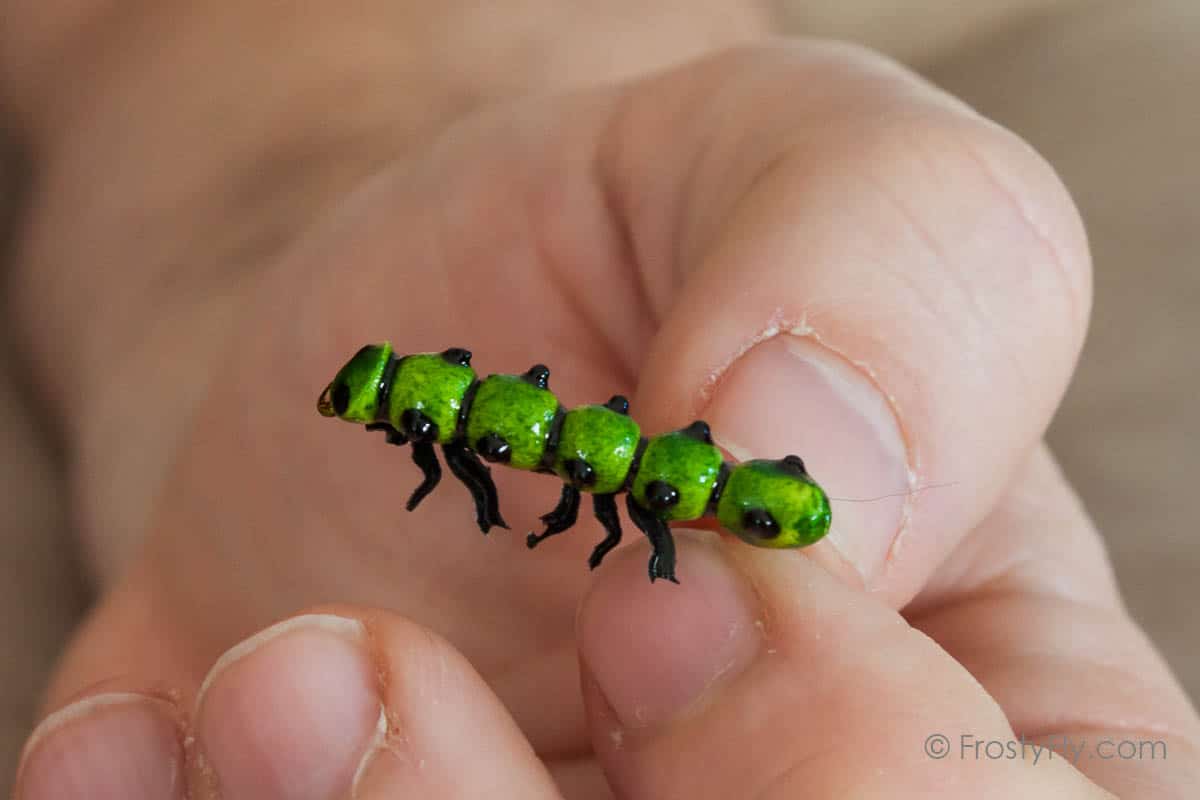

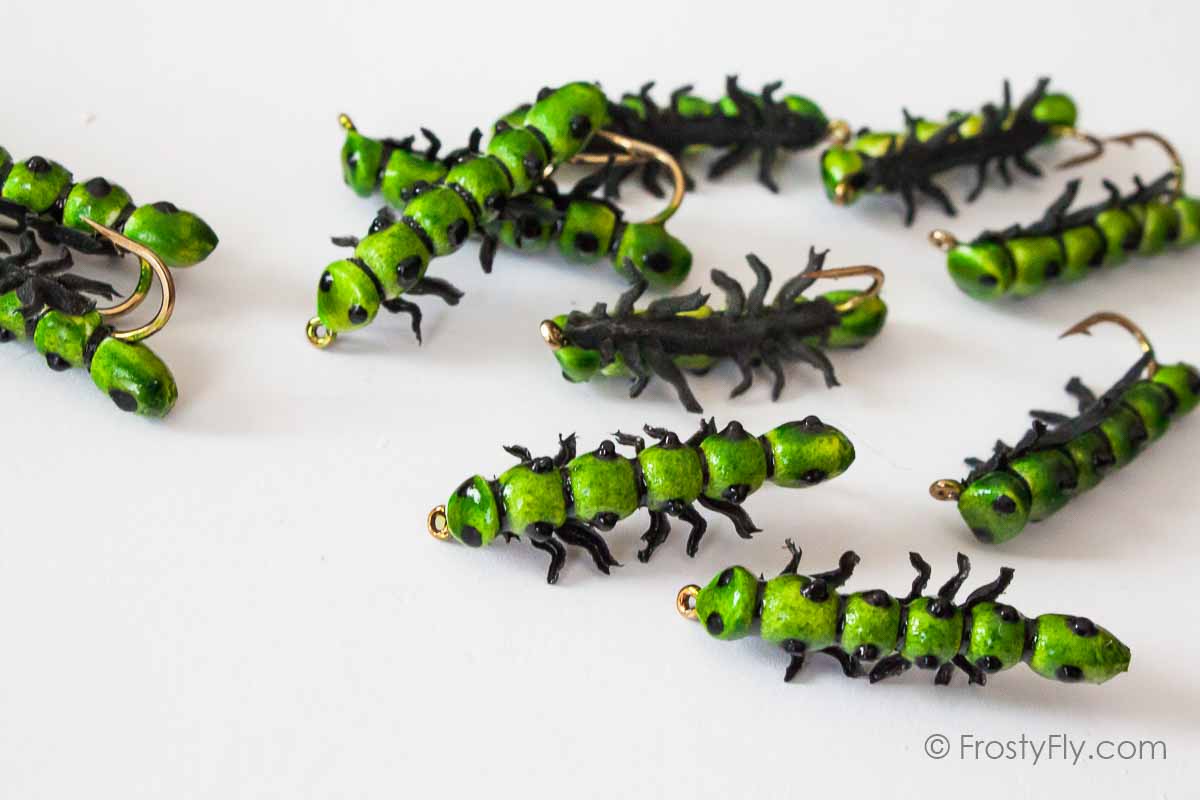
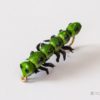

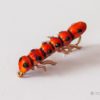
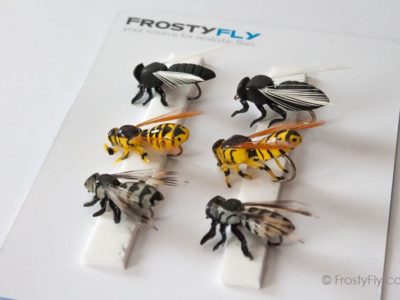
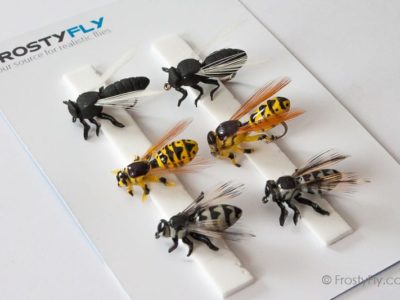



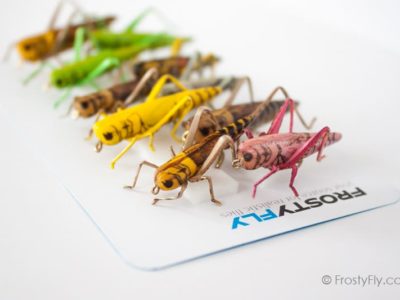

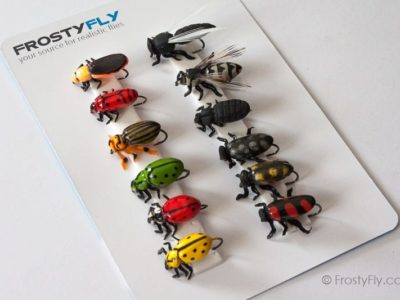
Reviews
There are no reviews yet.